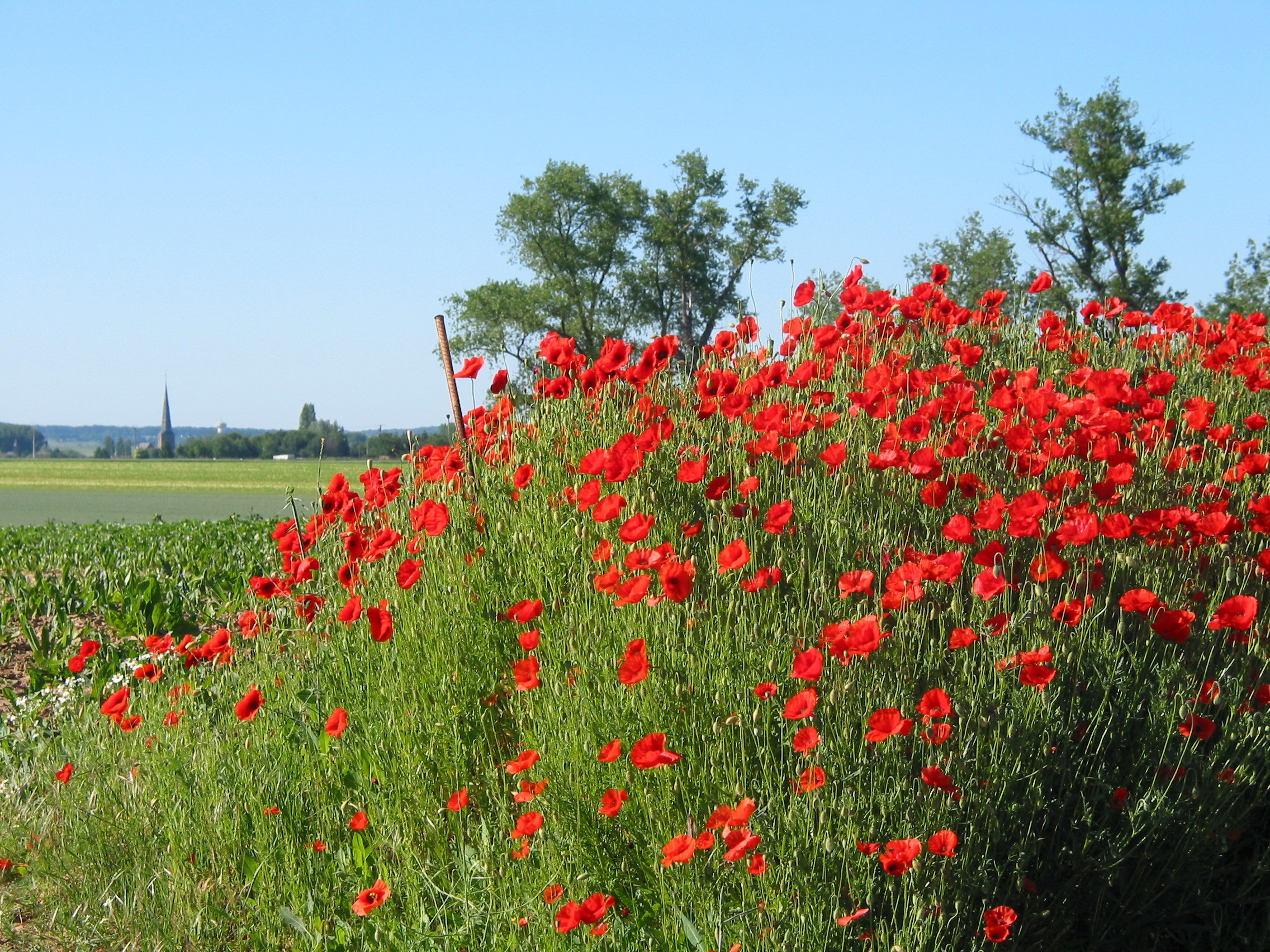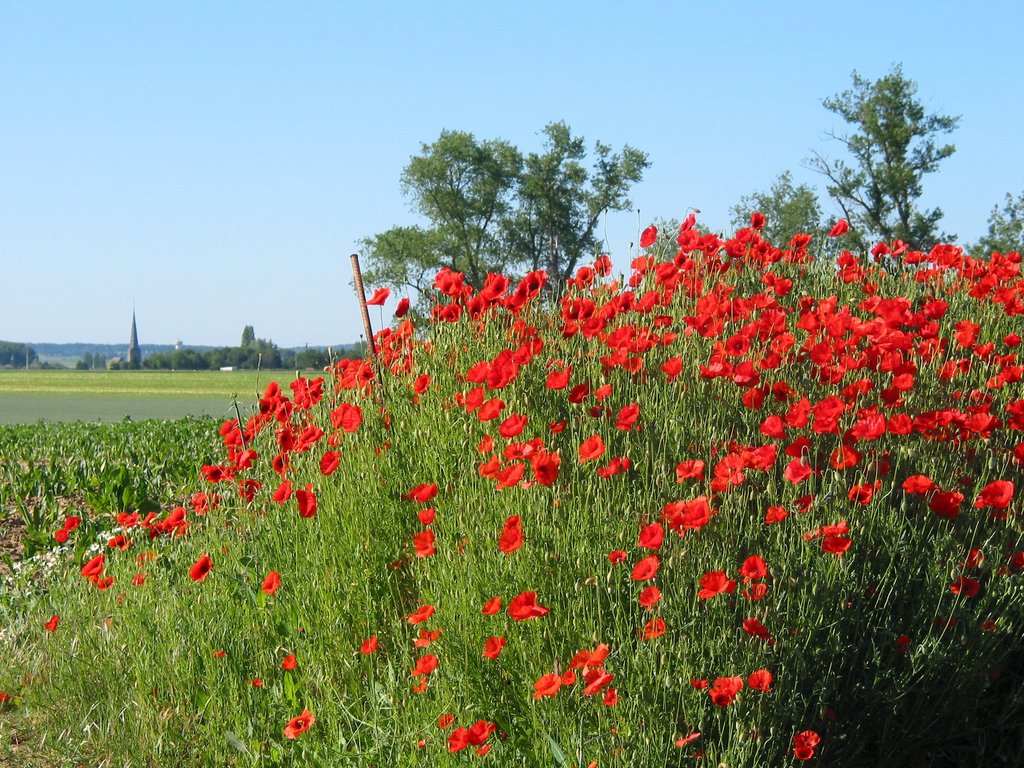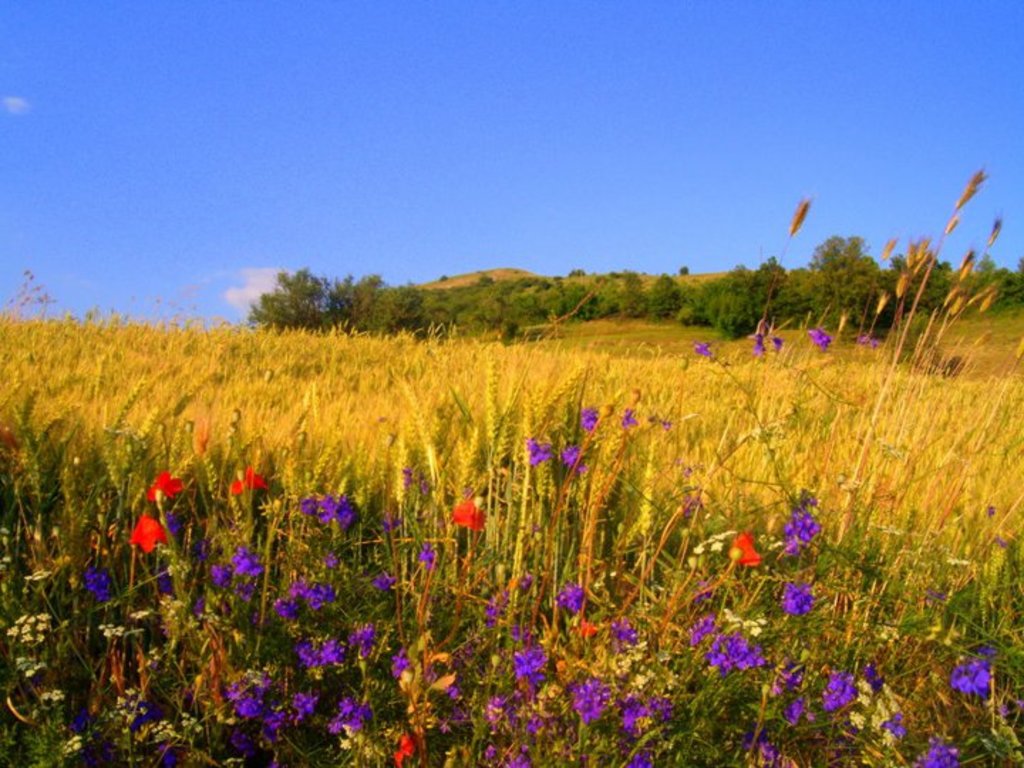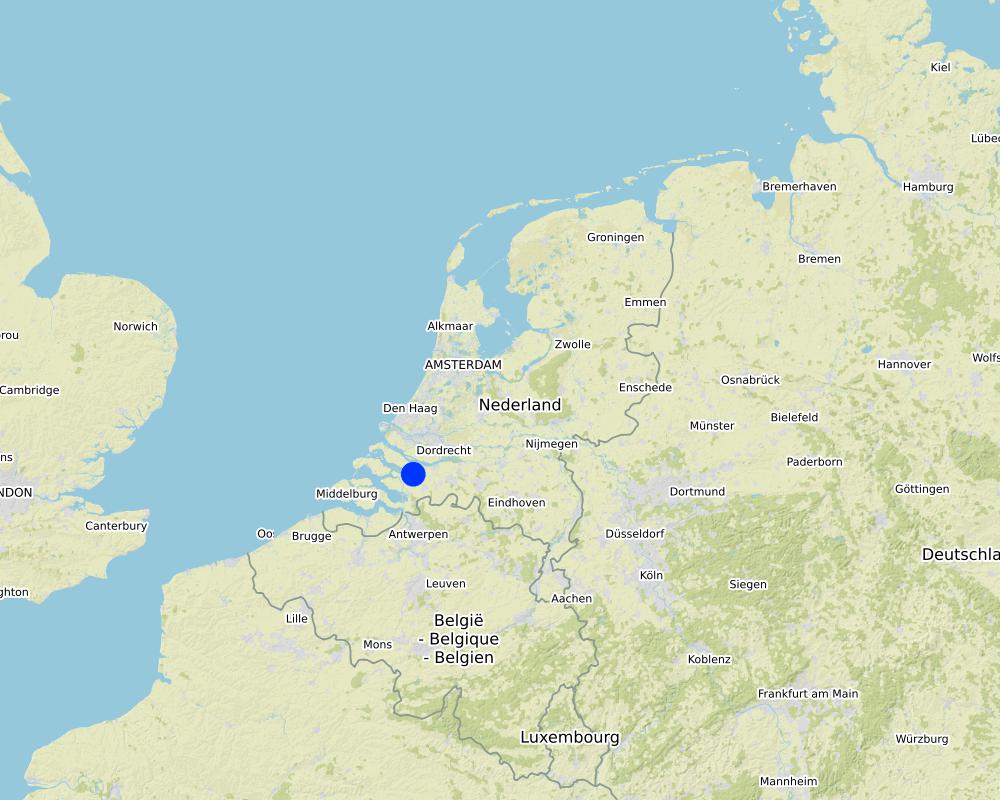Flower strips on paths within crops to support functional agrobiodiversity [Netherlands]
- Creation:
- Update:
- Compiler: Alan Radbourne
- Editors: David Robinson, David Norris, Sabine Reinsch
- Reviewers: Renate Fleiner, William Critchley
FAB-randen in het spuitspoor
technologies_5381 - Netherlands
View sections
Expand all Collapse all1. General information
1.2 Contact details of resource persons and institutions involved in the assessment and documentation of the Technology
Key resource person(s)
co-compiler:
Hoogendijk Tijmen
Southern Agriculture and Horticulture Organization (ZLTO)
Netherlands
land user:
Maris Pieter
V.O.F. Maris-Geluk
Netherlands
SLM specialist:
Dieleman Wico
Southern Agriculture and Horticulture Organization (ZLTO)
Netherlands
SLM specialist:
Lavet Laura
Southern Agriculture and Horticulture Organization (ZLTO)
Netherlands
Name of project which facilitated the documentation/ evaluation of the Technology (if relevant)
European Interreg project FABulous FarmersName of the institution(s) which facilitated the documentation/ evaluation of the Technology (if relevant)
UK Centre for Ecology & Hydrology (CEH) - United KingdomName of the institution(s) which facilitated the documentation/ evaluation of the Technology (if relevant)
Zuidelijke Land en Tuinbouw Organisatie (ZLTO) - Netherlands1.3 Conditions regarding the use of data documented through WOCAT
The compiler and key resource person(s) accept the conditions regarding the use of data documented through WOCAT:
Yes
1.4 Declaration on sustainability of the described Technology
Is the Technology described here problematic with regard to land degradation, so that it cannot be declared a sustainable land management technology?
No
2. Description of the SLM Technology
2.1 Short description of the Technology
Definition of the Technology:
Flower strips are established on arable crop access paths to attract and support natural enemies to control and decrease crop pests
2.2 Detailed description of the Technology
Description:
Planting flower strips to provide nectar and pollen to attract beneficial insect species that can help control pests is a well-known and well-used technology in the arable dominated South-West of the Netherlands. The use of such wildflower strips is increasingly being used across the world. Usually these wildflower strips are planted in bands around the edge or through the middle of a crop field.
This technology describes an interesting experiment that aims to see if it is more beneficial to establish several smaller flower strips between the crops to attract functional agrobiodiversity benefits to be compared to a smaller number of wider flower strips as is the standard practice.
The technology is being tested on 2 parcels of land that contain 2 different crops in the South-West of the Netherlands using these micro-flower strips, each approximately 0.5 meters wide, alongside access tracks running through the crops. The premise is these small strips can be effective spaces to increase the number of wild flowers present alongside a crop for the functional agrobiodiversity benefits without needing to use productive crop land.
Overall, the technology ultimately reduces the requirement for spraying of pesticides to control problematic species, thus improving the health and production of the crops while reducing the cost and environmental impact of spraying pesticides.
This trial design for a well-known technology has proven to be successful if designed and implemented well. The increased locations in closer proximity to the crop supported beneficial species presence. However, how different this is compared to standard application of wildflower strip technology is still to be fully understood, especially when considering the slightly more challenging application of the trial technology design.
The technology trial is supported by the EU Interreg FABulous Farmers project.
2.3 Photos of the Technology
2.5 Country/ region/ locations where the Technology has been applied and which are covered by this assessment
Country:
Netherlands
Region/ State/ Province:
Noord-Brabant
Further specification of location:
Dinteloord
Specify the spread of the Technology:
- applied at specific points/ concentrated on a small area
Is/are the technology site(s) located in a permanently protected area?
No
Comments:
Pieter Maris, Dinteloord
parcel 1 Lat 51.618219 Lon 4.359685
parcel 2 Lat 51.617056 Lon 4.347348
Map
×2.6 Date of implementation
Indicate year of implementation:
2019
2.7 Introduction of the Technology
Specify how the Technology was introduced:
- through land users' innovation
- through projects/ external interventions
Comments (type of project, etc.):
FABulous Farmers project
3. Classification of the SLM Technology
3.1 Main purpose(s) of the Technology
- preserve/ improve biodiversity
- Provide habitat for functional agrobiodiversity to control pests
3.2 Current land use type(s) where the Technology is applied
Land use mixed within the same land unit:
No

Cropland
- Annual cropping
Number of growing seasons per year:
- 1
Is intercropping practiced?
Yes
If yes, specify which crops are intercropped:
Wildflowers intercropped with main crop
Is crop rotation practiced?
No
3.3 Has land use changed due to the implementation of the Technology?
Has land use changed due to the implementation of the Technology?
- No (Continue with question 3.4)
3.4 Water supply
Water supply for the land on which the Technology is applied:
- mixed rainfed-irrigated
3.5 SLM group to which the Technology belongs
- integrated pest and disease management (incl. organic agriculture)
3.6 SLM measures comprising the Technology

vegetative measures
- V5: Others
Comments:
Planting of wildflower strips alongside crops.
3.7 Main types of land degradation addressed by the Technology

biological degradation
- Bh: loss of habitats
3.8 Prevention, reduction, or restoration of land degradation
Specify the goal of the Technology with regard to land degradation:
- not applicable
4. Technical specifications, implementation activities, inputs, and costs
4.1 Technical drawing of the Technology
Technical specifications (related to technical drawing):
There are two sorts of flower strips. One strip 3 meters wide and several small strips 0.5 meters wide. The wide strip will be established along the edge of the fields. The small strips will be established within the crops. The distance between the small strips will be varied in order to investigate the effect of spacing.
Author:
Tijmen Hoogendijk (ZLTO)
Date:
05/08/2019
4.2 General information regarding the calculation of inputs and costs
Specify how costs and inputs were calculated:
- per Technology area
Indicate size and area unit:
0.5m wide 'micro-strip'
other/ national currency (specify):
Euro
If relevant, indicate exchange rate from USD to local currency (e.g. 1 USD = 79.9 Brazilian Real): 1 USD =:
0.85
Indicate average wage cost of hired labour per day:
150
4.3 Establishment activities
| Activity | Timing (season) | |
|---|---|---|
| 1. | Planting of wildflower strips alongside access paths | Spring |
| 2. | Planting of larger wildflower stip alongside boarder of crop field | Spring |
4.4 Costs and inputs needed for establishment
| Specify input | Unit | Quantity | Costs per Unit | Total costs per input | % of costs borne by land users | |
|---|---|---|---|---|---|---|
| Labour | Seeding wildflower strips | 150m strip | 6.0 | 15.0 | 90.0 | 100.0 |
| Equipment | Tractor & attchments (already owned) | 1 | 1.0 | 100.0 | ||
| Plant material | Wildflower seed mix | per 150m strip | 6.0 | 50.0 | 300.0 | |
| Total costs for establishment of the Technology | 390.0 | |||||
| Total costs for establishment of the Technology in USD | 458.82 | |||||
If land user bore less than 100% of costs, indicate who covered the remaining costs:
The EU Interreg FABulous Farmers project
Comments:
The technology is testing a new design for wildflower planting. The use of wildflower strips is already used by the land user so no new equipment or knowledge required, just additional time for labour and the seed mix required to trial the new design.
4.5 Maintenance/ recurrent activities
Comments:
No ongoing maintenence for this technology.
4.6 Costs and inputs needed for maintenance/ recurrent activities (per year)
Comments:
No ongoing maintenence for this technology.
4.7 Most important factors affecting the costs
Describe the most determinate factors affecting the costs:
The price of seed mix required.
If implementing this technology in a new area the cost of equipment would also be required, but not required at this site as the general practice of wildflower strips is already being used.
5. Natural and human environment
5.1 Climate
Annual rainfall
- < 250 mm
- 251-500 mm
- 501-750 mm
- 751-1,000 mm
- 1,001-1,500 mm
- 1,501-2,000 mm
- 2,001-3,000 mm
- 3,001-4,000 mm
- > 4,000 mm
Specify average annual rainfall (if known), in mm:
875.00
Specifications/ comments on rainfall:
800-950 mm
Indicate the name of the reference meteorological station considered:
KNMI
Agro-climatic zone
- semi-arid
5.2 Topography
Slopes on average:
- flat (0-2%)
- gentle (3-5%)
- moderate (6-10%)
- rolling (11-15%)
- hilly (16-30%)
- steep (31-60%)
- very steep (>60%)
Landforms:
- plateau/plains
- ridges
- mountain slopes
- hill slopes
- footslopes
- valley floors
Altitudinal zone:
- 0-100 m a.s.l.
- 101-500 m a.s.l.
- 501-1,000 m a.s.l.
- 1,001-1,500 m a.s.l.
- 1,501-2,000 m a.s.l.
- 2,001-2,500 m a.s.l.
- 2,501-3,000 m a.s.l.
- 3,001-4,000 m a.s.l.
- > 4,000 m a.s.l.
Indicate if the Technology is specifically applied in:
- not relevant
5.3 Soils
Soil depth on average:
- very shallow (0-20 cm)
- shallow (21-50 cm)
- moderately deep (51-80 cm)
- deep (81-120 cm)
- very deep (> 120 cm)
Soil texture (topsoil):
- medium (loamy, silty)
Soil texture (> 20 cm below surface):
- medium (loamy, silty)
Topsoil organic matter:
- medium (1-3%)
5.4 Water availability and quality
Ground water table:
< 5 m
Availability of surface water:
good
Water quality (untreated):
for agricultural use only (irrigation)
Water quality refers to:
both ground and surface water
Is water salinity a problem?
No
Is flooding of the area occurring?
No
5.5 Biodiversity
Species diversity:
- medium
Habitat diversity:
- medium
5.6 Characteristics of land users applying the Technology
Sedentary or nomadic:
- Sedentary
Market orientation of production system:
- commercial/ market
Off-farm income:
- less than 10% of all income
Relative level of wealth:
- average
Individuals or groups:
- individual/ household
Level of mechanization:
- mechanized/ motorized
Gender:
- men
Age of land users:
- middle-aged
5.7 Average area of land used by land users applying the Technology
- < 0.5 ha
- 0.5-1 ha
- 1-2 ha
- 2-5 ha
- 5-15 ha
- 15-50 ha
- 50-100 ha
- 100-500 ha
- 500-1,000 ha
- 1,000-10,000 ha
- > 10,000 ha
Is this considered small-, medium- or large-scale (referring to local context)?
- medium-scale
5.8 Land ownership, land use rights, and water use rights
Land ownership:
- company
Land use rights:
- individual
- partnership
Are land use rights based on a traditional legal system?
No
Specify:
Land use rights are based on ownership or lease agreement
5.9 Access to services and infrastructure
health:
- poor
- moderate
- good
education:
- poor
- moderate
- good
technical assistance:
- poor
- moderate
- good
employment (e.g. off-farm):
- poor
- moderate
- good
markets:
- poor
- moderate
- good
energy:
- poor
- moderate
- good
roads and transport:
- poor
- moderate
- good
drinking water and sanitation:
- poor
- moderate
- good
financial services:
- poor
- moderate
- good
6. Impacts and concluding statements
6.1 On-site impacts the Technology has shown
Socio-economic impacts
Production
crop quality
Comments/ specify:
Reduced pests of crops with increased number of beneficial species for pollination and competition has reduced the crop stress and disease improving the crop quality.
Income and costs
expenses on agricultural inputs
Comments/ specify:
Use of wildflower stips has reduced requirement for pesticide application
Ecological impacts
Biodiversity: vegetation, animals
beneficial species
Comments/ specify:
Reduced pests on crops with increased number of beneficial species for pollination and competition has reduced crop stress and disease improving the crop quality.
pest/ disease control
Comments/ specify:
Reduced pests on crops with increased number of beneficial species for pollination and competition has reduced crop stress and disease improving the crop quality.
6.4 Cost-benefit analysis
How do the benefits compare with the establishment costs (from land users’ perspective)?
Short-term returns:
slightly positive
Long-term returns:
slightly positive
How do the benefits compare with the maintenance/ recurrent costs (from land users' perspective)?
Short-term returns:
slightly positive
Long-term returns:
slightly positive
Comments:
The technology has shown a positive outcome of the use of micro-strips of a similar outcome to the use of wider wildflower strips. Generally the use of wildflower strips is very positive for the control of pests and increase in beneficial species.
6.5 Adoption of the Technology
- single cases/ experimental
Of all those who have adopted the Technology, how many did so spontaneously, i.e. without receiving any material incentives/ payments?
- 0-10%
Comments:
Support by an SLM expert thought the EU FABulous Farmers project
6.6 Adaptation
Has the Technology been modified recently to adapt to changing conditions?
No
6.7 Strengths/ advantages/ opportunities of the Technology
| Strengths/ advantages/ opportunities in the land user’s view |
|---|
| Utilises the space alongside paths within a crop rather than taking over larger areas on the borders of field (though often these are marginally productive areas anyway so almost a swap like for like). |
| Strengths/ advantages/ opportunities in the compiler’s or other key resource person’s view |
|---|
| Places the wildflowers, and thus the beneficial species, nearer to the crops in the centre of the field. |
| Reduces the requirement for pesticide use. |
6.8 Weaknesses/ disadvantages/ risks of the Technology and ways of overcoming them
| Weaknesses/ disadvantages/ risks in the land user’s view | How can they be overcome? |
|---|---|
| More challenging to plant wildflowers in smaller strips in between crops compared to the use of wider strips. | Tractor atachment technology development specifically for implementation could be developed |
| Weaknesses/ disadvantages/ risks in the compiler’s or other key resource person’s view | How can they be overcome? |
|---|---|
| Potentially more challenging to plant and harvest crop with more diverse intercropping with wildflowers | Well designed intercropping practice this issue can be overcome |
7. References and links
7.1 Methods/ sources of information
- field visits, field surveys
SLM expert conducted regular visits to site to support design and implementation
- interviews with land users
SLM expert supported land user throughout implementation of technology
7.4 General comments
This trial design for a well-known technology has proven to be successful if designed and implemented well. The increased locations in closer proximity to the crop supported beneficial species presence. However, how different this is compared to standard application of wildflower strip technology is still to be fully understood, especially when considering the slightly more challenging application of the trial technology design.
Links and modules
Expand all Collapse allLinks
No links
Modules
No modules





